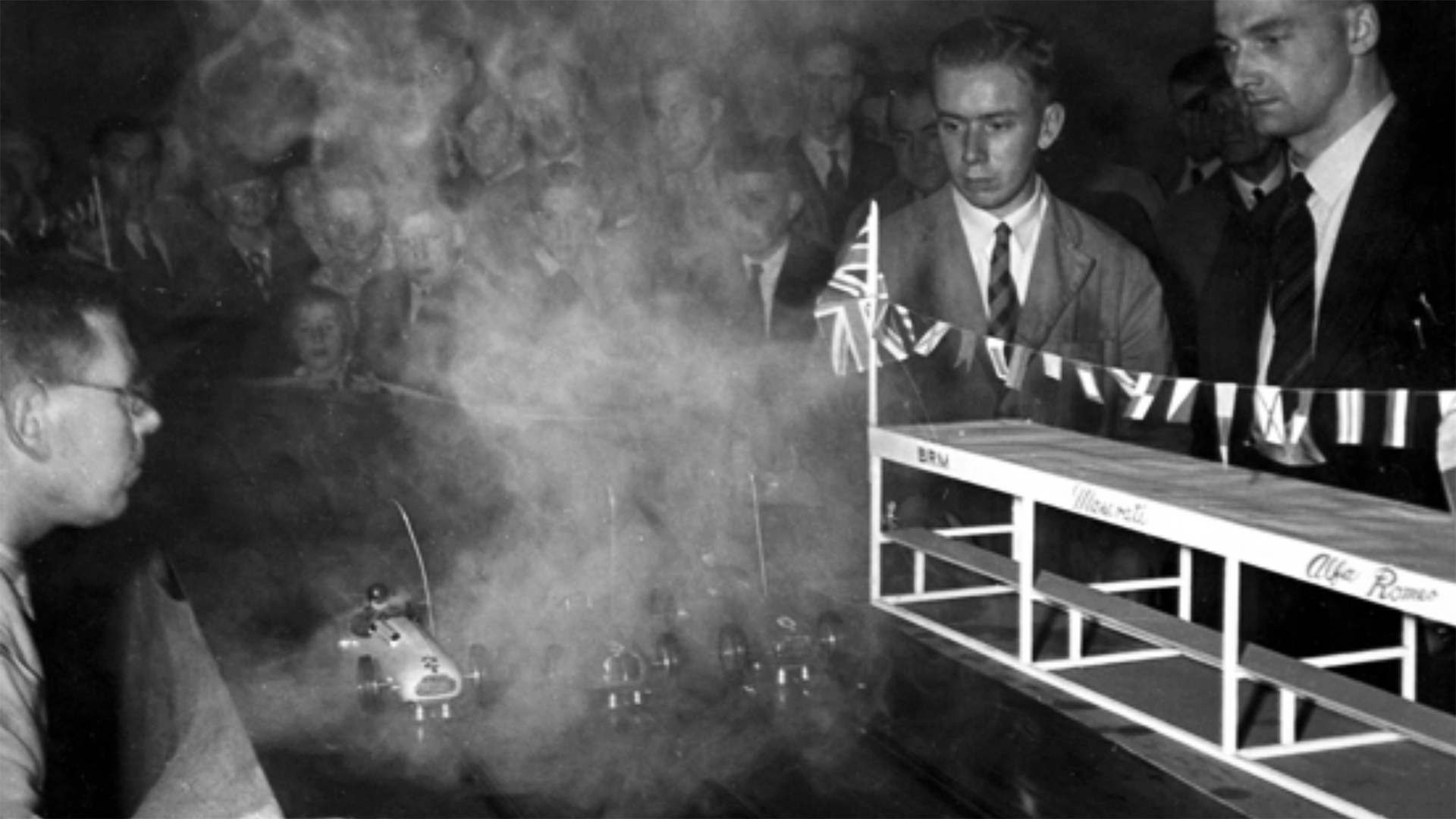

Even though it’s declined in popularity over the decades, slot car racing remains a pastime of adults and children alike. But back in the early years—we’re talking 1930s to 1950s here—the electric slot cars we know today had yet to be popularized. In their place were metal, 1/16th-scale replicas of period race cars powered by smoky little diesel engines, running along a raised central rail. Hard to imagine? Check out this color video from 1950s Britain for the immersive experience.
Picture this: tiny postwar Grand Prix cars, running four wide with their tinier engines screaming down the straight at 60 miles an hour. That was the scene at places like this indoor rail car track in Boscombe, England in 1956, with everything from the course to the car’s powertrains to the small tires made by hand by its creators, Alban Adams and Christopher Crocket. It’s a trip to see components like the clutch, driveshaft and rear differential shrunken down to the appropriate size. Of course, that process is a lot easier when you don’t have to incorporate a real driver.

According to slotcarhistory.com, the indoor track they raced on was a big figure-eight, around 120 feet long and sheltered from England’s notoriously crappy weather. If you’re worried about the hazards of diesel slot cars running at an indoor track, don’t fret. A set of hairdryers were repurposed to blow away the smog at the beginning the beginning of the race. That’s all you need, right? “Heavens old chap, I’m feeling a bit groggy” was uttered more than a few times, most likely. The exhaust gases can be seen floating around at 1:45 in the clip.
Despite the car’s diminutive diesel engines, they had enough power to propel the 40 carefully-crafted models around the track at up to 60 mph. Power was sent to the wheels via a tiny centrifugal clutch and custom built clockwork gears. I’m certain that if one of these nearly full-metal racers shot off the track during a lap it would kill somebody. With enough fuel for nearly 100 laps, they could also race for quite some time. Do a little math and that’s a range of more than two miles.
These were in essence a natural outgrowth of the pre-war phenomenon of tether cars, where similar diesel-powered model cars were raced around a circular track while being guided by a central tether, like a kid swinging around one of those model planes on a string. This also sounds like good, dangerous fun. Here’s a diagram of one—rail cars had a similar RWD construction.

Though diesel rail cars are extremely cool to the modern eye, back in the 1950s slot car aficionados were trying to come up with a way to electrify the whole thing, which would simplify the cars and allow consumers to bring tracks into their homes without worrying about emissions. When that happened in the late 1950s, the concept of internal combustion model cars would be waylaid until radio control technology advanced enough for practical (and outdoor) consumer use in the late 1960s.
Got a tip? Send us a note: tips@thedrive.com